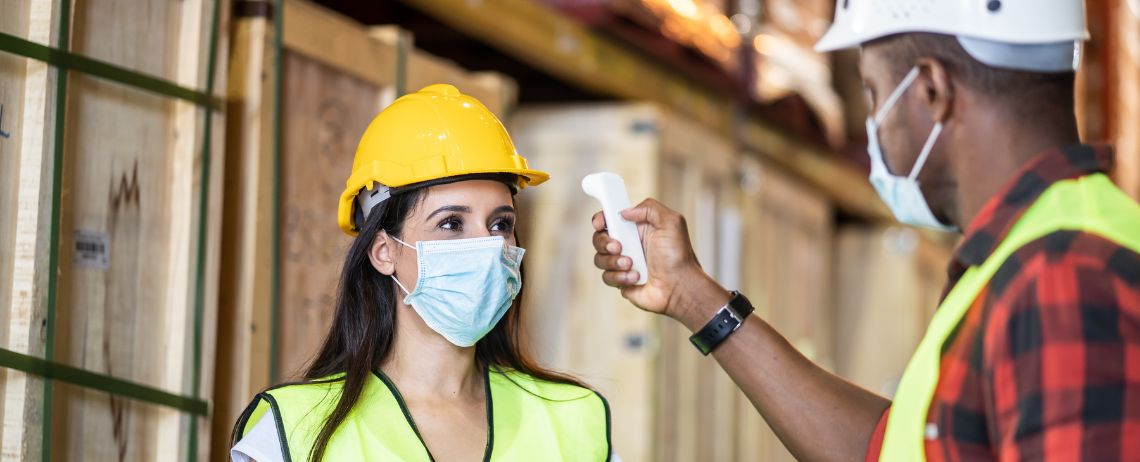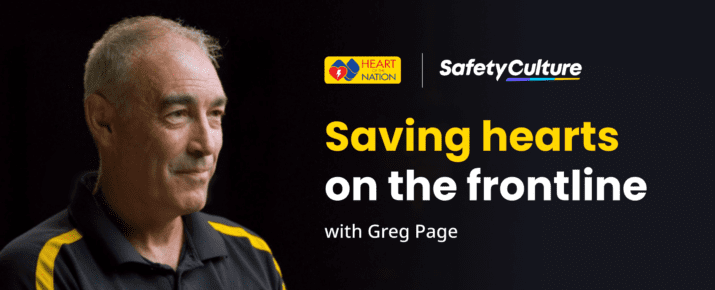Top 5 EHS trends of 2023 and beyond
Ask The Experts | Industry Trends | By | 22 Jul 2023 | 5 minute read

As we start the second half of the year, I find it interesting to listen to my other colleagues within the safety profession to see if what we’re working on aligns across industries. Together with my own thoughts, this article lists the top-five trends I’ve spotted within the environmental, health, and safety (EHS) community in 2023.
1. Technological advancements
Even before working with SafetyCulture, I considered the digitization of processes to be a vital part of streamlining and making our business more efficient and effective. The scope of technology improvements from what I saw in 2022 and what I can see in 2023 and beyond is extremely exciting and impressive.
As we’ve all witnessed this year, we’re in the boom of artificial intelligence (AI) as it works its way into standard business processes. This technological development will, in turn, increase our productivity and efficiencies within the business.
While at an industry trade show, I witnessed numerous autonomous systems, specifically within high-risk operations. Ultimately, this will reduce the likelihood of fatalities in the manufacturing industry. When I read the prosecution cases from the Health and Safety Executive (HSE) recently, it’s evident that significant injuries generally occur during maintenance processes. I anticipate that many autonomous solutions will be introduced to reduce – or hopefully eliminate – the interaction of humans and machinery. This would include robotics, which is already being used in logistics warehouses to eliminate pedestrian-vehicle interactions. I hope to see that this will become the norm going forward rather than a state-of-the-art system.
Digitizing paper-driven processes will continue and will not only support environmental impact, but also engage with the frontline workforce and proactively manage the continuous improvement of businesses.
Read more about product management tools like Monday.
2. Skills gap
The skills gap has been prevalent across numerous industries in the past year, and I think will continue into next year.
With the rise in new technologies, there’s an opportunity to upskill the current workforce to maintain and identify stars of the future. It will be important for businesses to engage with schools and universities, specifically in STEM topics.
“As a woman in STEM, I also hope there will be more of a focus on engaging with school-aged women to excite them about the possibilities of STEM careers.”
– Tiffany Argent, Customer Engagement Executive, SafetyCulture
Gone are the days when employers focus on educational qualifications as a fundamental requirement in a role. These days, a person’s experience, culture fit, personality, curiosity, innovation, and drive are more valuable to an employer. This especially rings true when we look at roles in health and safety (H&S), which have developed and expanded over recent years.
I think that professionals who pride themselves in regurgitating legislative requirements to prove a point within a business are a thing of the past. Businesses should seek innovative ideas, engaging leaders, and proactive influencers. As a mentor for up-and-coming health and safety professionals, it’s encouraging to see that this is the direction the profession is moving towards.
3. The COVID-19 legacy
Even though the pandemic seems to be a distant memory for some, I still feel there’s a legacy with regard to H&S that we can still learn from this year. If businesses have yet to consider their continuity planning after the reactionary effect seen across multiple industries, there is still an opportunity for these businesses to improve.
Bridging the skills gap
Part of the skills gap issue, I feel, is also part of the COVID legacy (as well as the Brexit legacy). It’s been reported that many skills have been lost because a lot of the over-50s workforce decided to retire early and improve their work-life balance, off the back of the pandemic. I do empathize with this group because, during the pandemic, I had the opportunity to spend more time with my girls.
Ensuring employee wellbeing
It’s great to see that employee mental health and wellbeing have recently been elevated up the agenda within businesses, having identified that it can be an issue in the workplace. And in line with this emerging H&S topic, I personally would like to see more proactive wellbeing campaigns to reduce the potential of individuals experiencing poor mental health.
From experience, companies are proud of their reactive measures, such as providing free counseling and support. However, I feel proactive wellbeing that’s integrated into the day-to-day of a business is more effective and engaging for employees. I hope that proactive wellbeing campaigns will become the norm for businesses and not just a ‘work perk’ for employees.
Working in remote and hybrid environments
Remote and flexible working has had a lot of coverage in the news, and I feel this will still continue past 2023. As a remote worker myself, I feel very productive compared to when I used to work in an office. With this setup, I’ve reduced distractions and increased focus.
Don’t get me wrong – it can be quite isolating at times. For this reason, the hybrid way of working, I think, is more beneficial. Meeting with my teammates, discussing the latest TV show, and meeting customers face to face and in their own habitat takes my role to another level. I hope businesses consider the continuation of flexible working as we move through 2023.
4. Social sustainability
Businesses are predominantly focusing on environmental sustainability and environmental, social, and governance (ESG). But they can’t achieve strategies and environmental commitments without the business’s most important asset – its workforce. SafetyCulture’s recent whitepaper, Feedback from the Field, highlighted that 40% of the workforce would like to see a greater investment in technology to improve processes, efficiency, and workplace safety.
I think that 2023 and beyond will develop the importance of social sustainability. Last year’s Catch the Wave campaign by the Institution of Occupational Safety and Health (IOSH) was a great start to raising awareness about this topic. As discussed above, wellbeing and hybrid working are part of that, and so is engaging the workforce to drive sustainability from the bottom up.
Gaining insights from the frontlines
Collecting real-time data and information, directly from the shop floor, was invaluable in my previous role. The frontline could witness and report on environmental inefficiencies together with ideas on opportunities to improve via a mobile application.
With the data collected from the field, the senior leadership team was better informed and supported to reduce decision-making time. Using a communication tool available to the frontline workforce, leaders could communicate directly and celebrate successes in environmental sustainability achievement.
Not only was I able to retain this workforce during challenging times (COVID-19 and Brexit), but I also improved efficiencies and productivity within the business by simply introducing technology where it was needed and wanted most – at the frontline.
Excluding the workforce from business sustainability strategies can hinder organizations from achieving their goals to reduce environmental impact.
Promoting diversity, equity, and inclusion in the workplace
Diversity, equity, and inclusion (DE&I) within a business are now crucial to employees searching for new roles. There are some great DE&I courses available to jumpstart this initiative in your own workplace. For example, on our microlearning platform EdApp by SafetyCulture, Karamo Brown from the Netflix’s Queer Eye covers DE&I in a free microlearning course.
However, training isn’t enough. Businesses need to incorporate a culture that prioritizes workplace culture and safety among its people.
5. Energy consumption
With energy prices increasing, not only is it affecting us at home, but it also has a major knock-on effect on businesses.
Many solutions I’m seeing around renewable energy will become prevalent in 2023 and beyond – not only to reduce costs, but also to support climate change and global targets.
The rise of electric vehicles and renewable energy sources for transport (e.g. hydrogen-fuelled vehicles) is on the rise this year.
Important Notice
The information contained in this article is general in nature and you should consider whether the information is appropriate to your specific needs. Legal and other matters referred to in this article are based on our interpretation of laws existing at the time and should not be relied on in place of professional advice. We are not responsible for the content of any site owned by a third party that may be linked to this article. SafetyCulture disclaims all liability (except for any liability which by law cannot be excluded) for any error, inaccuracy, or omission from the information contained in this article, any site linked to this article, and any loss or damage suffered by any person directly or indirectly through relying on this information.





